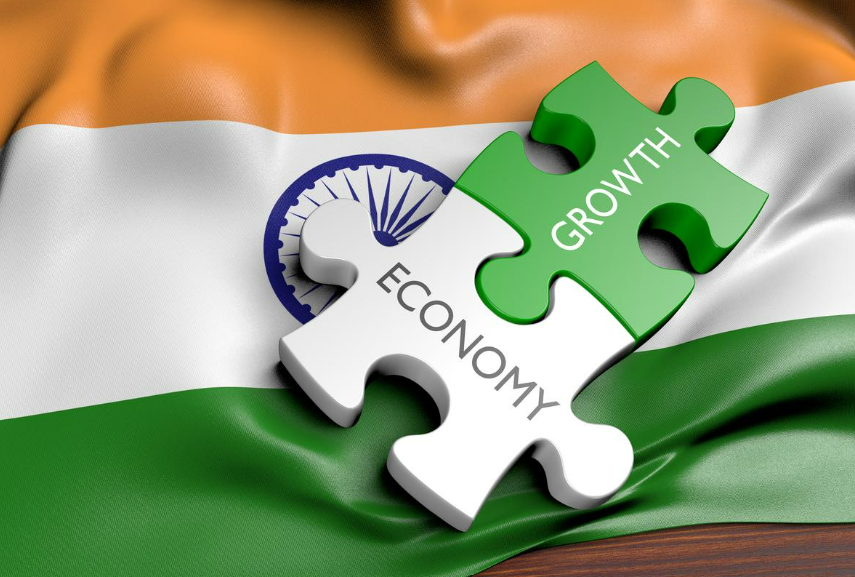The Indian Economy is made up of different kinds of activities through which people earn their livelihood. To study these activities in a systematic way, they are grouped into various sectors. These sectors help us understand how resources are used, how people are employed, and how much each sector contributes to the Indian economy.
This chapter explains the classification of sectors, their importance, and the challenges related to employment and growth.
Introduction
– Every economy has different kinds of economic activities.
– Basis of Classification
Economic activities are classified into three main sectors based on the nature of work.
- Primary Sector: Activities that directly use natural resources (farming, fishing, mining)
- Secondary Sector: Activities where natural products are changed into other forms through manufacturing (factories, industries)
- Tertiary Sector: Activities that provide services to support production and daily life (teachers, doctors, transport, banking)
Importance of Sectors
- Helps in understanding which sector contributes more to the economy (also in Indian economy).
- Shows which sector provides maximum employment.
- Use for planning policies and economic development.
Topic-1: Comparing the three sectors
1) Measuring Production
- To compare the sectors, we measure the value of all goods and services produced.
- Value of final goods = Gross Domestic Product (GDP).
- GDP- Total value of final goods and services produced in a country during a particular year.
2) Use of value
- Instead of quantities, economists use the value of goods and services produced.
- But here too, we count only the value of final goods and services.
3) Final goods v/s Intermediate goods
- Intermediate goods- Goods used as inputs in producing other goods (e.g. cotton, flour)
- Final goods- Goods that are ready for consumption or investment (e.g. cloth, bread, car)
- If we count both, it will lead to double counting (same product counted multiple times)
- Hence, only the value of final goods and services is considered.
4) GDP (Gross Domestic Product)
- The total value of all final goods and services produced within a country in a year is called GDP.
- GDP is an important indicator of the economy’s size and growth.
5) Who estimates GDP in India?
- In India, GDP is calculated by the Central Government Ministry, with the help of data collected from all States and Union Territories.
- This helps to know:
1) Which sector contributes the most to the economy.
2) How the economy is changing over time.
Topic-2: Historical change in sectors
1) Primary Sector Dominance (Agricultural Age)
- In the earliest stage of development, most people were dependent on the primary sector (agriculture, fishing, forestry)
- Reason: Natural resources were the main source of livelihood.
- This sector produced most of the goods people used in daily life.
2) Growth of Secondary Sector (Industrial Age)
- With technological progress, industries developed.
- People shifted from agricultural to industries.
- Industrial Revolution (18th-19th century) – massive increase in production of goods in factories.
3) Rise of Tertiary Sector (Service Age)
- As economics advanced, demand for services increased (transport, communication, banking)
- Tertiary sector supported the growth of primary and secondary sectors.
- In modern times, service sector becomes dominant in terms of GDP contribution.
Topic-3: Primary, Secondary and Tertiary Sectors in India
1) Primary Sector (Agriculture and Allied Activities)
- Includes farming, fishing, forestry, mining, animal husbandry.
- Uses natural resources directly.
- Provides raw material for industries.
- In Indian economy, this sector contributes the least.
2) Secondary Sector (Manufacturing and Industries)
- Converts raw materials into finished goods.
- Provides employment in factories, mills, small-scale industries.
- Growth of this sector is essential for modernization and reducing dependence on agriculture.
3) Tertiary Sector (Service Sector)
- Provides services that support both primary and secondary sectors.
- Reasons for growth:
1) Need of basic services (schools, hospitals, police)
2) Growth of industries and agriculture – demand for transport, storage and trade.
3) Rising incomes – demand for private education, health, shopping, tourism. - In Indian economy, this sector contributes the most.
4) Comparison of these sectors on the basis of their contribution in Indian Economy
- Primary Sector- employs most people but contributes least to GDP.
- Secondary Sector- moderate growth, important for development.
- Tertiary Sector- fastest growing, contributes maximum to GDP, but employs fewer people compared to its share in GDP.
Topic-4: Where are most of the people employed?
1) Employment situation in India
- In India, the primary sector employs the largest number of people but it contributes the least in Indian Economy.
- However, its share in GDP is very low.
- This means: many people work in agriculture, but they produce less in value terms.
2) Underemployment (Disguised Unemployment)
- A major problem in the primary sector.
- More people are engaged in work than actually required.
- Even if some people are removed, production will not fall.
- Such hidden unemployment is called disguised unemployment.
3) Key Points
- India’s problem is not lack of workers, but lack of enough productive jobs.
- Underemployment is the major issue preventing the rise of Indian economy.
- Most people are employed in the primary sector, but the real need is to shift workers to secondary and tertiary sectors, where productivity and income are higher.
Topic-5: How to create more employment?
1) The Problem
- India has enough workers but not enough jobs.
- Most people are engaged in the primary sector, but many are underemployed.
- The goal – creates more productive jobs in secondary and tertiary sectors.
2) Ways to create employment
(a) Rural Areas
- Agriculture:
Provide irrigation, better seeds, fertilizers, and credit facilities – increase farm productivity and employ more people. - Promote small-scale industries like food processing, tailoring, carpentry, handicrafts.
- Develop rural infrastructure – roads, storage, cold chain storage facilities.
- Government Scheme: MGNREGA, 2005 (Mahatma Gandhi National Rural Employment Guarantee Act), guarantees 100 days of wage employment in a year of rural households.
(b) Urban Areas
- Promote more industries and manufacturing units to absorb surplus labour from agriculture.
- Support small and medium enterprises (SMES).
- Expand services like tourism, IT, banking and education.
- Improve public services- more jobs in health, teaching, police, etc.
Topic-6: Division of Sectors as Organized and Unorganized
1) Organized Sector
- Includes enterprises and workers that are registered by the government.
- Follow rules and regulations such as labour law, minimum wages, working hours, safety measures.
- Workers get job security, fixed wages, holiday, medical benefits, pensions.
- Examples – Government offices, Banks, Schools and Hospitals, Big Companies
2) Unorganized Sector
- Includes small and scattered units not registered with the government.
- Do not follow rules strictly – workers face low wages, long working hours, no job security.
- No provision for paid leave, pensions or medical benefits.
- Workers can be removed at any time.
- Examples: Small shops, street vendors, construction workers, domestic workers, small farmers.
Topic-7: How to protect workers in the Unorganized Sector?
1) The Problem
- A large number of people in India work in the unorganized sector.
- Workers here face:
1) Low and Irregular wages
2) No job security
3) No paid leave, medical benefits, or pensions.
4) Exploitation by employers.
2) Ways to Protect Workers
(a) Role of Government
- Fix minimum wages to ensure fair income.
- Provide laws for maximum working hours and safe working conditions.
- Extend social security like health care, pensions, and maternity benefits.
- Implement welfare programmes for poor workers in rural and urban areas.
(b) Rural Workers
- Protect farmers and agricultural labourers by:
– Providing cheap credit through banks and cooperatives.
– Ensuring irrigation, seeds, fertilizers at low cost.
– Offering insurance against crop failure, drought, or floods.
(c) Urban Workers
- Protect small-scale workers like vendors, rickshaw pullers, construction labourers, domestic workers by:
– Providing training and skill development.
– Creating better job opportunities in organized sector.
– Ensuring legal protection against exploitation.
3) Example of Protection
- MGNREGA, 2005 – guarantees 100 days of wage employment in rural areas.
- Helps reduce exploitation by ensuring minimum wages and employment.
Topic-8: Sectors in terms of Ownership
1) Public Sector
- Owned, controlled, and managed by the govt.
- Main aim: public welfare.
- Provides basic facilities like education, health, transport, electricity, water supply, defence, banking.
- Funded through taxes and government revenue.
- Examples:
– Indian Railways
– All India Institute of Medical Sciences (AIIMS)
2) Private Sector
- Owned and managed by individuals or private companies.
- Main aim: earning profit
- Provides goods and services depending on demand and ability to pay.
- Often more efficient but may ignore social welfare.
- Examples: Reliance industries, Private banks, Hospitals and Schools
Conclusion
The study of sectors of the Indian economy shows us how different types of work are divided and how they contribute to growth and employment. Agriculture is the backbone of the Indian economy, as it provides employments to more than half of the workers. The secondary sector plays an important role in strengthening the Indian Economy by converting raw materials into finished goods. Services like transport, banking and education show the growing importance of the tertiary sector in the Indian economy.
In recent years, the service sector has become the largest contributor to the Indian economy. To make Indian economy more balanced, all three sectors need to grow together. Government spending for health, education and infrastructure is vital for strengthening the Indian economy.
Full Chapter Explanation
For more chapters, click the link below:
Class-10th Economics Chapter-1 Development (NCERT Notes)
Making Of A Global World: Class-10th History Chapter-3 ( Easy Notes )






